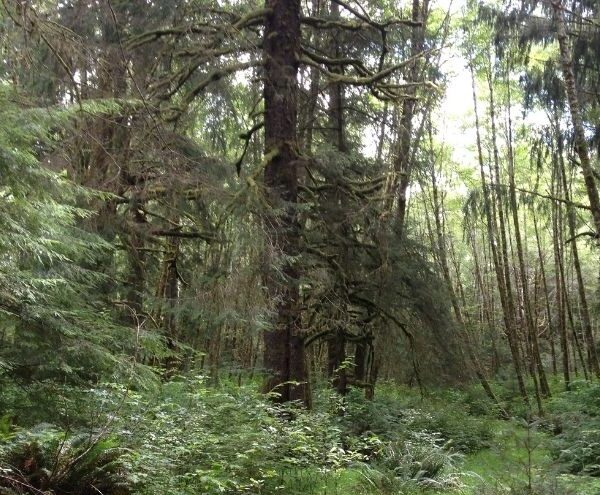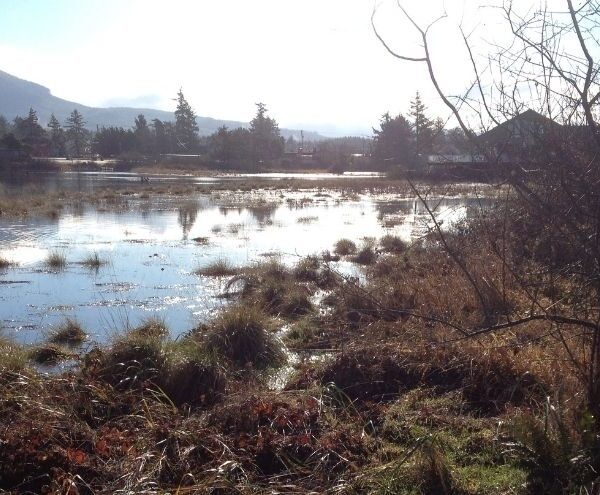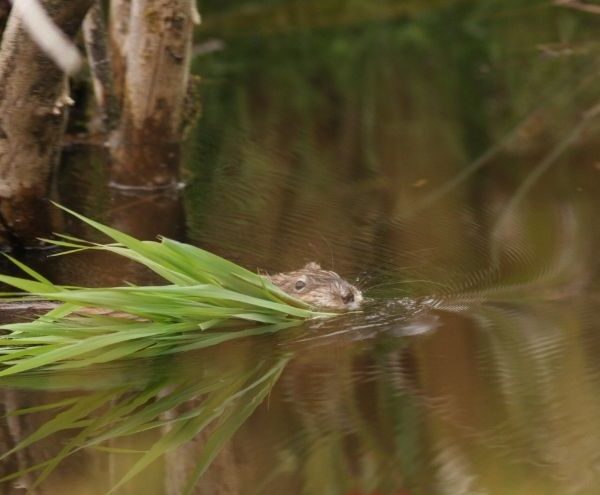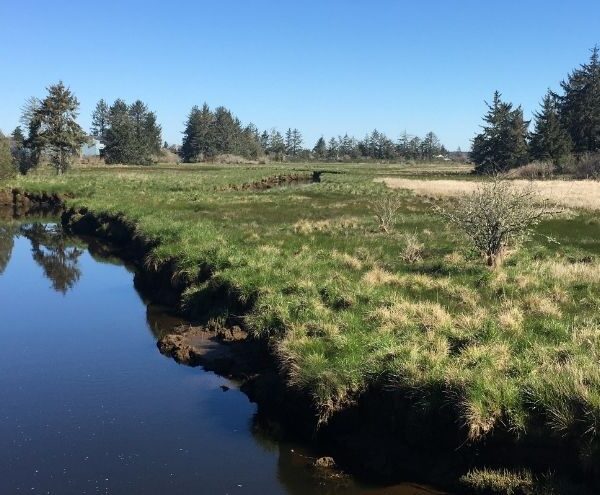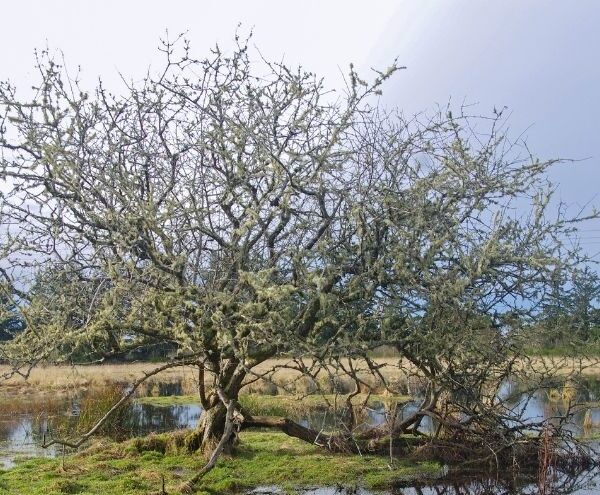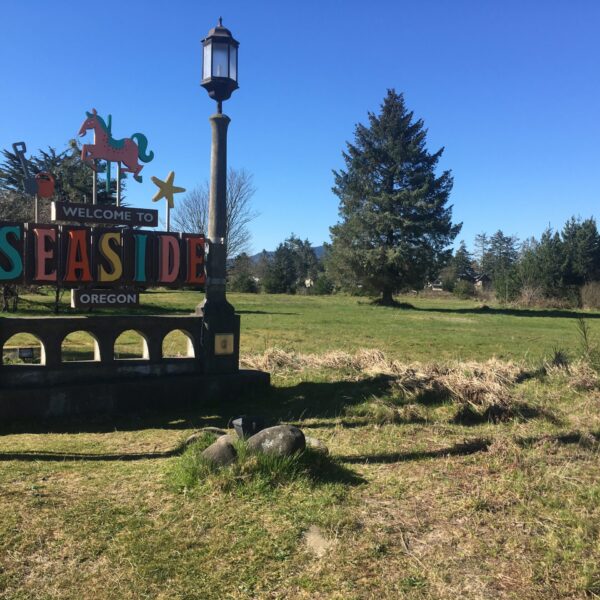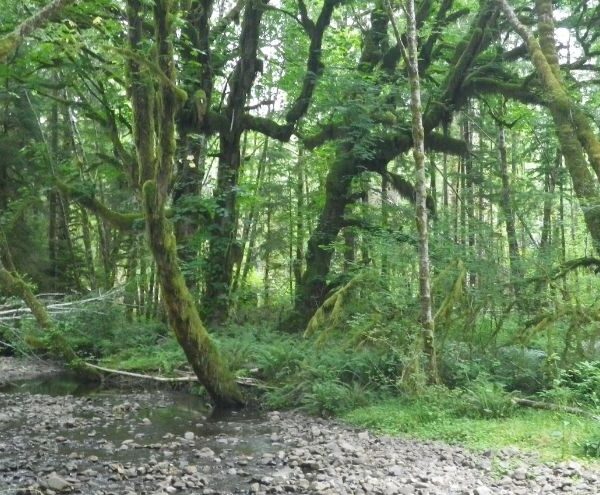
Type of Project: Habitat Reserve
As Circle Creek drops off Tillamook Head at the south end of Seaside, it meanders a broad floodplain that, together with the upland forest at its fringe, is home to a wide variety of native wildlife, from coho salmon to elk. Trails invite visitors to witness the land’s transformation from pasture back to coastal rainforest.
History of Circle Creek
In 2013, NCLC and its partners completed a landmark floodplain restoration project at Circle Creek, allowing the land to naturally flood during wintertime high water events and mitigating flooding of adjacent Highway 101. Circle Creek is home to a wide variety of native wildlife: coastal coho salmon, redlegged frogs, salamanders, beaver, coyote, migratory songbirds, waterfowl, nesting bald eagles, and a herd of nearly 100 elk.
In 2002, NCLC began pursuing an unprecedented opportunity: purchase a 364-acre parcel known as Circle Creek. A diverse group of national, state and local partners came together to support the project, which made it possible for NCLC to sit down with the property owner Russ Earl and negotiate a deal that worked for everyone. More than 50 individuals and organizations donated the needed funds.
Years of invasive plant management and habitat development have eradicated acres of thistle, blackberry, and tansy ragwort at Circle Creek, and tens of thousands of native trees and shrubs have been planted, many by volunteers. In 2013, NCLC and our partners at Clatsop County and Oregon Department of Transportation completed a landmark floodplain restoration project at the site, allowing the land to naturally flood during wintertime high water events and mitigating flooding of adjacent Highway 101.
These seasonal floods invite even more wildlife onto the land, including waterfowl and juvenile salmon, which find refuge in the off-channel sloughs that form on the floodplain. NCLC’s stewardship program is patiently working to allow the land to re-emerge as a coastal rainforest in the Necanicum River floodplain.
